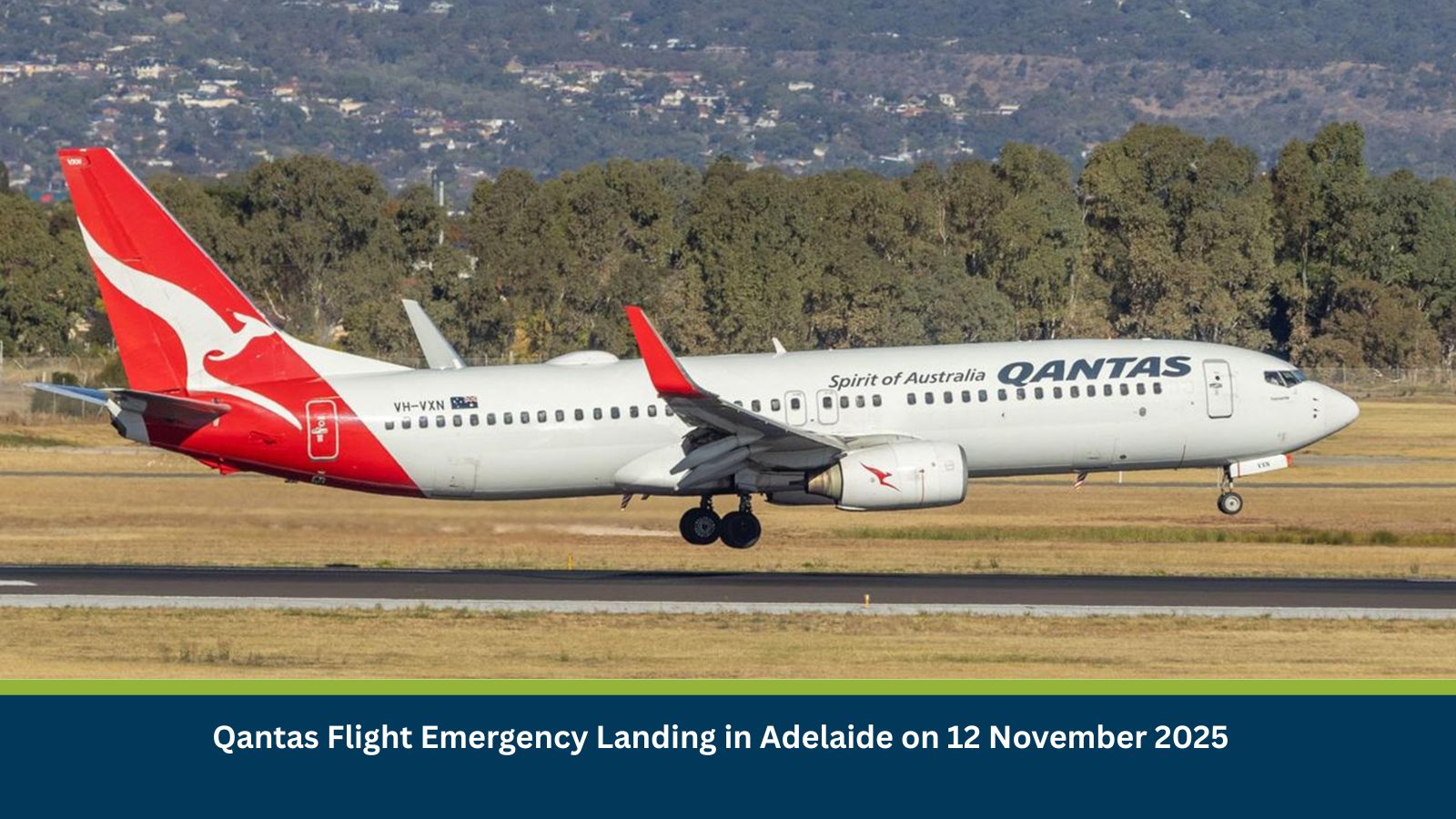What Is Risk Analysis in the Context of Travel Risk Events
Travel risk analysis evaluates how incidents such as accidents, emergency landings, or operational failures disrupt mobility, passenger safety, and business continuity. In aviation, these risks often arise from mechanical faults, adverse weather, or human factors. Australia’s aviation network has historically demonstrated strong resilience, with effective emergency response mechanisms mitigating potential fatalities in similar cases, such as technical failures in Rex or Scoot flights. Nevertheless, each emergency landing event stresses critical systems and highlights vulnerabilities in aircraft maintenance, safety protocols, and contingency readiness at major airports like Adelaide (ADL).
Executive Summary
- Date of Event: 12 November 2025
- Location: Adelaide Airport, South Australia, Australia
- Risk Category: Travel Risks
- Severity Score: 3 / 5
- Confidence Level: 85 %
On 12 November, a Qantas flight conducted an emergency landing at Adelaide Airport following an unspecified technical issue. Emergency services responded promptly, and all passengers disembarked safely. While no injuries or significant damage were reported, the event caused temporary operational disruption at ADL. The incident is assessed as moderate in severity, with short-term impacts on Qantas operations and passenger confidence. Regulatory bodies such as the Australian Transport Safety Bureau (ATSB) and the Civil Aviation Safety Authority (CASA) are expected to review the event for procedural or maintenance deficiencies.
Current Updates
The emergency landing was executed safely, and normal airport operations resumed shortly thereafter. Qantas has grounded the affected aircraft pending investigation. Flight delays and gate adjustments occurred at ADL due to emergency service mobilization. Authorities confirmed there was no ongoing safety threat to the public or airport infrastructure.
Known Hotspots and Sensitive Areas
- High Impact: Adelaide Airport runways, taxiways, and emergency response zones.
- Medium Impact: Surrounding access roads (Sir Donald Bradman Drive) and nearby commercial districts during response operations.
- Low Impact: Wider Adelaide metropolitan area and other airports.
Adelaide Airport frequently experiences operational strain from fog, flight delays, and technical diversions, making it a recurring node for aviation-related risk concentration.
Impact on Transportation and Services
The event caused immediate but contained disruption to Qantas operations, with minor flight delays affecting other airlines due to temporary runway closures. Passengers experienced travel rescheduling and connection delays. Business travel and air cargo operations may have faced short-term impact from reduced airfield capacity. Communication systems, including ATC coordination and passenger notification platforms, operated effectively, preventing wider service breakdowns.
Recommended Actions
- Passenger and Employee Safety: Confirm welfare of all passengers and crew; maintain transparent communication through verified channels.
- Operational Readiness: Review Qantas fleet maintenance protocols and schedule proactive inspections of aircraft with similar configurations.
- Travel Continuity: Re-route critical flights through alternate hubs (e.g., Melbourne or Sydney) to minimize cascading network delays.
- Business Communication: Issue timely updates to partners, travel agencies, and clients regarding service recovery timelines.
- Crisis Preparedness: Conduct a post-incident review and integrate findings into Business Continuity Plans (BCPs) focusing on aviation disruptions.
Multidimensional Impact
The emergency landing has limited environmental and infrastructure impact but moderate reputational implications for Qantas. The incident may prompt heightened public attention to aviation safety and potential regulatory advisories. Broader supply chains remain unaffected, though passenger sentiment may temporarily waver, especially if follow-up investigations reveal maintenance irregularities.
Emergency Contacts
- Emergency Services (Police / Fire / Ambulance): 000/112
- Adelaide Airport Operations Centre: +61 8 8308 9211
- Qantas Customer Care: https://www.qantas.com/au/en/support/contact-us.html
- Australian Transport Safety Bureau (ATSB): https://www.atsb.gov.au/
- Civil Aviation Safety Authority (CASA): https://www.casa.gov.au/
Final Thoughts
The 12 November Qantas emergency landing underscores the continued importance of safety vigilance within aviation operations. While effectively managed, such events highlight the fragility of air transport logistics and public confidence. Strengthened maintenance oversight, proactive communication, and refined emergency coordination are key to sustaining operational resilience. Continuous monitoring via intelligence platforms such as MitKat’s Datasurfr will enhance early detection of aviation-related risks and support informed travel-risk management.
Stay ahead of operational risks with real-time alerts, scenario modeling, and expert advisories with datasurfr’s Predict. Start your 14-day free trial of Datasurfr’s Risk Intelligence Platform today.






